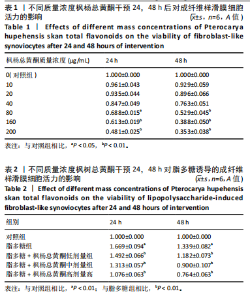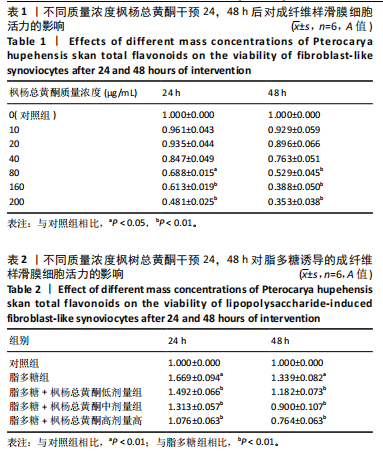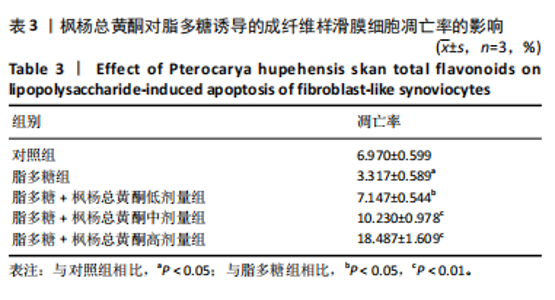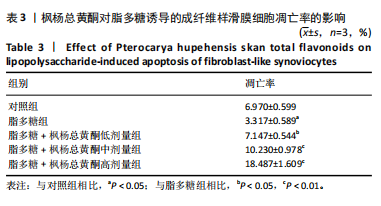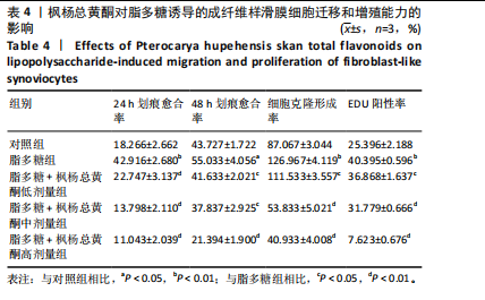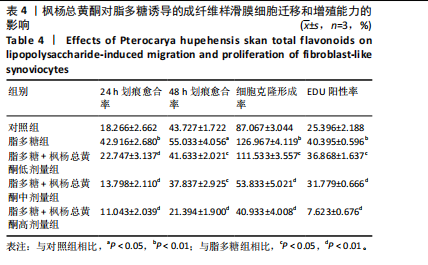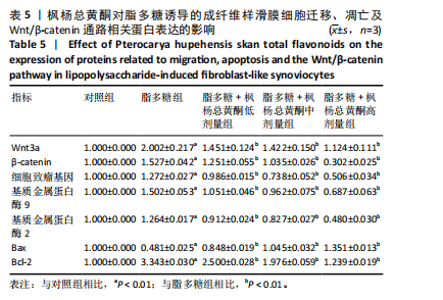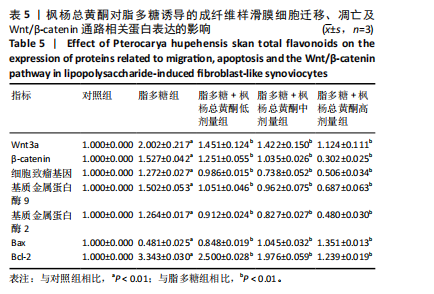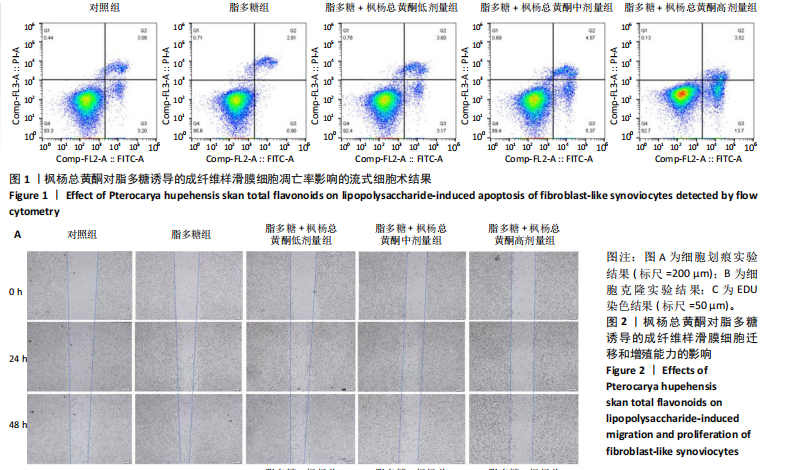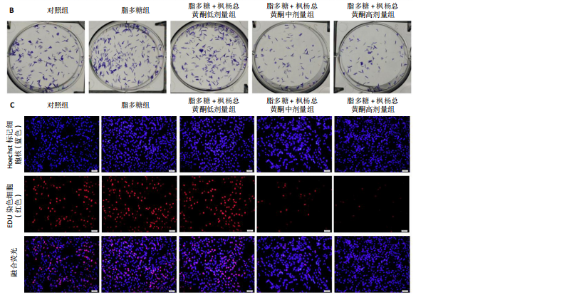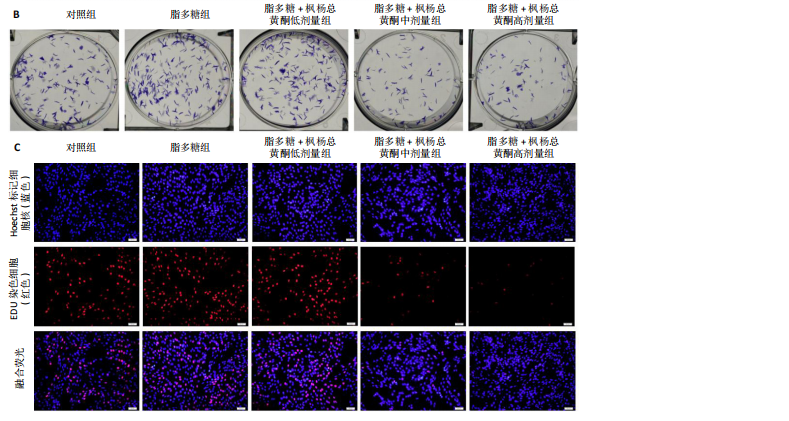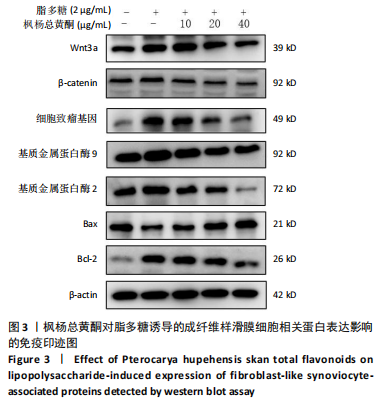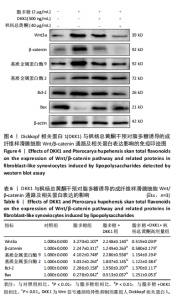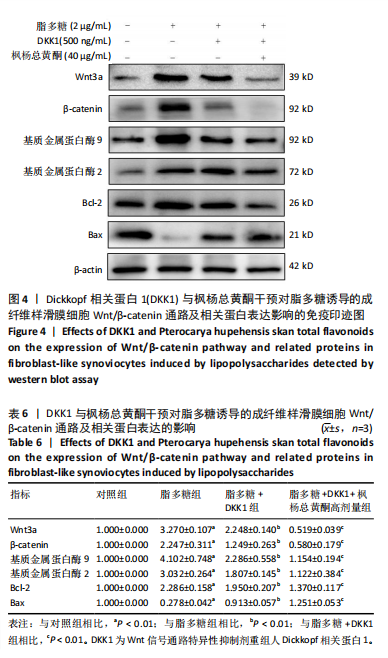[1] DI MATTEO A, BATHON JM, EMERY P. Rheumatoid arthritis. Lancet. 2023; 402(10416):2019-2033.
[2] MIGUEL-LAVARIEGA D, ELIZARARRÁS-RIVAS J, VILLARREAL-RÍOS E, et al. Perfil epidemiológico de la artritis reumatoide [Epidemiological profile of rheumatoid arthritis]. Rev Med Inst Mex Seguro Soc. 2023;61(5):574-582.
[3] ZHANG F, JONSSON AH, NATHAN A, et al. Deconstruction of rheumatoid arthritis synovium defines inflammatory subtypes. Nature. 2023;623(7987):616-624.
[4] LIU X, WANG Z, QIAN H, et al. Natural medicines of targeted rheumatoid arthritis and its action mechanism. Front Immunol. 2022;13:945129.
[5] 高双.枫杨树皮化学成分的研究[D].广州:暨南大学,2013
[6] 朱健,武璐璐,张全书,等.枫杨乙醇提物对胶原诱导性关节炎大鼠的治疗作用及其机制研究[J].中国药理学通报,2019,35(1):117-123.
[7] 陈明.湖北枫杨水煎液诱导CIA模型大鼠滑膜细胞凋亡机制研究[D].恩施:湖北民族大学,2020.
[8] 石妤.基于谱效关系和网络药理学筛选艾叶总黄酮抗RA滑膜炎活性成分和作用机制研究[D].武汉:湖北大学,2023.
[9] 张盛.竹叶黄酮的抗炎作用及物质基础研究[D].武汉:湖北中医药大学,2016.
[10] 侯孜明. 基于Fas/FasL介导的线粒体凋亡探讨枫杨总黄酮治疗RA的作用机制[D].恩施:湖北民族大学,2023.
[11] 吴昊,陈国庆,卢曼,等.湖北枫杨总黄酮通过调控PI3K/AKT信号通路抑制成纤维细胞样滑膜细胞的迁移和侵袭[J].中国病理生理杂志,2024,40(1): 134-140.
[12] TSALTSKAN V, FIRESTEIN GS. Targeting fibroblast-like synoviocytes in rheumatoid arthritis. Curr Opin Pharmacol. 2022;67:102304.
[13] XU Y, ZAI Z, LU Z, et al. Circular RNA CircCDKN2B-AS_006 Promotes the Tumor-like Growth and Metastasis of Rheumatoid Arthritis Synovial Fibroblasts by Targeting the miR-1258/RUNX1 Axis. Int J Mol Sci. 2023;24(6):5880.
[14] SEN M, REIFERT J, LAUTERBACH K, et al. Regulation of fibronectin and metalloproteinase expression by Wnt signaling in rheumatoid arthritis synoviocytes. Arthritis Rheum. 2002;46(11):2867-2877.
[15] LEE YA, CHOI HM, LEE SH, et al. Synergy between adiponectin and interleukin-1β on the expression of interleukin-6, interleukin-8, and cyclooxygenase-2 in fibroblast-like synoviocytes. Exp Mol Med. 2012;44(7):440-447.
[16] YANG M, SU Y, XU K, et al. Rheumatoid arthritis increases the risk of malignant neoplasm of bone and articular cartilage: a two-sample bidirectional mendelian randomization study. Arthritis Res Ther. 2023;25(1):219.
[17] 熊香珍.甲氨蝶呤与硫酸羟氯喹联合塞来昔布在类风湿性关节炎患者治疗中的应用效果[J].临床合理用药,2024,17(29):108-111.
[18] 李杰,邓泽辉,王英,等.托珠单抗联合泼尼松和甲氨蝶呤治疗难治性中重度类风湿关节炎临床评价[J].中国药业,2024,33(4):97-100.
[19] 彭延刚.艾拉莫德联合布洛芬治疗类风湿关节炎的临床效果[J].临床合理用药,2023,16(7):27-29+33.
[20] BERGSTRA SA, SEPRIANO A, KERSCHBAUMER A, et al. Efficacy, duration of use and safety of glucocorticoids: a systematic literature review informing the 2022 update of the EULAR recommendations for the management of rheumatoid arthritis. Ann Rheum Dis. 2023;82(1):81-94.
[21] SANGHAVI N, INGRASSIA JP, KOREM S, et al. Cardiovascular Manifestations in Rheumatoid Arthritis. Cardiol Rev. 2024;32(2):146-152.
[22] Wang X, Kong Y, Li Z. Advantages of Chinese herbal medicine in treating rheumatoid arthritis: a focus on its anti-inflammatory and anti-oxidative effects. Front Med (Lausanne). 2024;11:1371461.
[23] 刘二雄,钟兵,乾灿,等.“类风湿关节炎患者湿热及寒湿痹阻证辨识系统”的建立及在临床实践中的应用[J].风湿病与关节炎,2024,13(7):12-15+26.
[24] KOMATSU N, TAKAYANAGI H. Mechanisms of joint destruction in rheumatoid arthritis - immune cell-fibroblast-bone interactions. Nat Rev Rheumatol. 2022; 18(7):415-429.
[25] LEI Y, GUO X, LUO Y, et al.Synovial microenvironment-influenced mast cells promote the progression of rheumatoid arthritis. Nat Commun. 2024;15(1):113.
[26] 文建庭,刘健,王馨,等. 新风胶囊含药血清对 TNF-α诱导的类风湿关节炎滑膜成纤维细胞凋亡和炎症的影响[J]. 中国中药杂志,2021,46(2):436-443.
[27] CHEN P, ZHOU J, RUAN A, et al. Synovial tissue-derived extracellular vesicles induce chondrocyte inflammation and degradation via NF-κB signalling pathway: An in vitro study. J Cell Mol Med. 2022;26(7):2038-2048.
[28] SEEWALD LA, SABINO IG, MONTNEY KL, et al. Synovial fluid mitochondrial DNA concentration reflects the degree of cartilage damage after naturally occurring articular injury. Osteoarthritis Cartilage. 2023;31(8):1056-1065.
[29] MANCA ML, LATTUADA D, VALENTI D, et al. Potential therapeutic effect of curcumin loaded hyalurosomes against inflammatory and oxidative processes involved in the pathogenesis of rheumatoid arthritis: The use of fibroblast-like synovial cells cultured in synovial fluid. Eur J Pharm Biopharm. 2019;136:84-92.
[30] SMITH MH, GAO VR, PERIYAKOIL PK, et al. Drivers of heterogeneity in synovial fibroblasts in rheumatoid arthritis. Nat Immunol. 2023;24(7):1200-1210.
[31] NEWTON K, STRASSER A, KAYAGAKI N, et al. Cell death. Cell. 2024;187(2):235-256.
[32] YIOU W, ZHIHONG W, SHIBAI Z, et al. MiR-326 regulates cell proliferation and apoptosis in fibroblast-like synoviocytes in rheumatoid arthritis. Hum Cell. 2023; 36(3):987-996.
[33] CHEN S, WANG J, WANG J, et al. Wnt/β-catenin signaling pathway promotes abnormal activation of fibroblast-like synoviocytes and angiogenesis in rheumatoid arthritis and the intervention of Er Miao San. Phytomedicine. 2023; 120:155064.
[34] GUO D, PAN H, LU X, et al. Rspo2 exacerbates rheumatoid arthritis by targeting aggressive phenotype of fibroblast-like synoviocytes and disrupting chondrocyte homeostasis via Wnt/β-catenin pathway. Arthritis Res Ther. 2023;25(1):217.
[35] WANG Y, YIN R, LI X, et al. Morroniside Attenuates Rheumatoid Arthritis by Inhibiting Rheumatoid Synoviocytes Invasion through the NF-κB/MMPs Pathway. Ann Clin Lab Sci. 2024;54(5):604-617.
[36] PULIK Ł, ŁĘGOSZ P, MOTYL G. Matrix metalloproteinases in rheumatoid arthritis and osteoarthritis: a state of the art review. Reumatologia. 2023;61(3):191-201.
[37] GRILLET B, PEREIRA RVS, VAN DAMME J, et al. Matrix metalloproteinases in arthritis: towards precision medicine. Nat Rev Rheumatol. 2023;19(6):363-377.
[38] STOJANOVIC SK, STAMENKOVIC BN, CVETKOVIC JM, et al. Matrix Metalloproteinase-9 Level in Synovial Fluid-Association with Joint Destruction in Early Rheumatoid Arthritis. Medicina (Kaunas). 2023;59(1):167.
[39] 徐子涵,常文静,周凯伦,等.类风湿关节炎患者滑膜组织中p-AKT、Bcl-2、MMP-9的表达水平及临床意义[J].武警医学,2023,34(6):484-489.
[40] 曹承华,贺雅静,高荧苒,等.LPS介导的炎症反应过程及作用机制[J].河南大学学报(医学版),2017,36(1):70-76.
[41] WU S, WANG J, LI J, et al. microRNA-21 Aggravates Lipopolysaccharide-Induced Inflammation in MH7A Cells Through Targeting SNF5. Inflammation. 2020;43(2): 441-454. |
